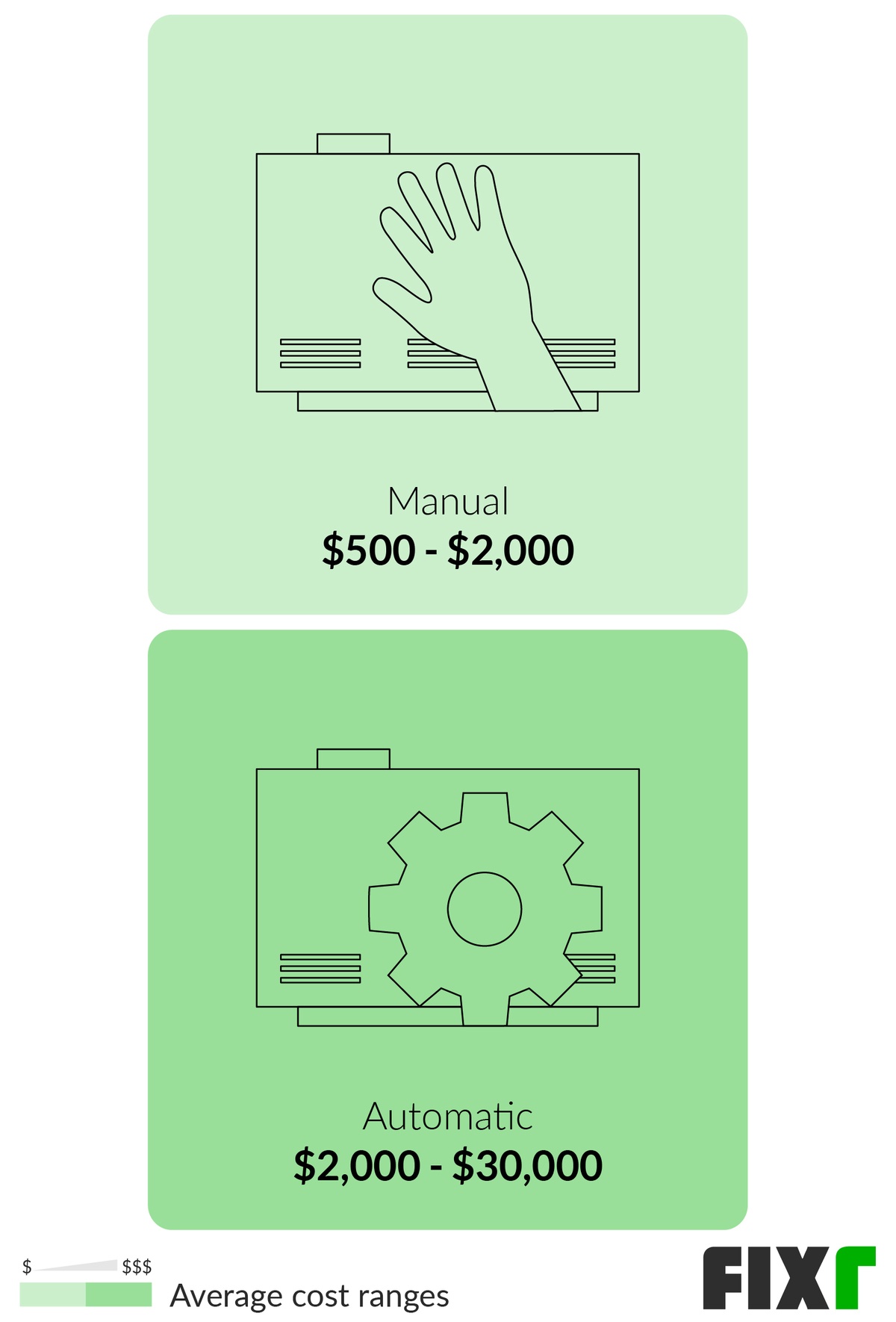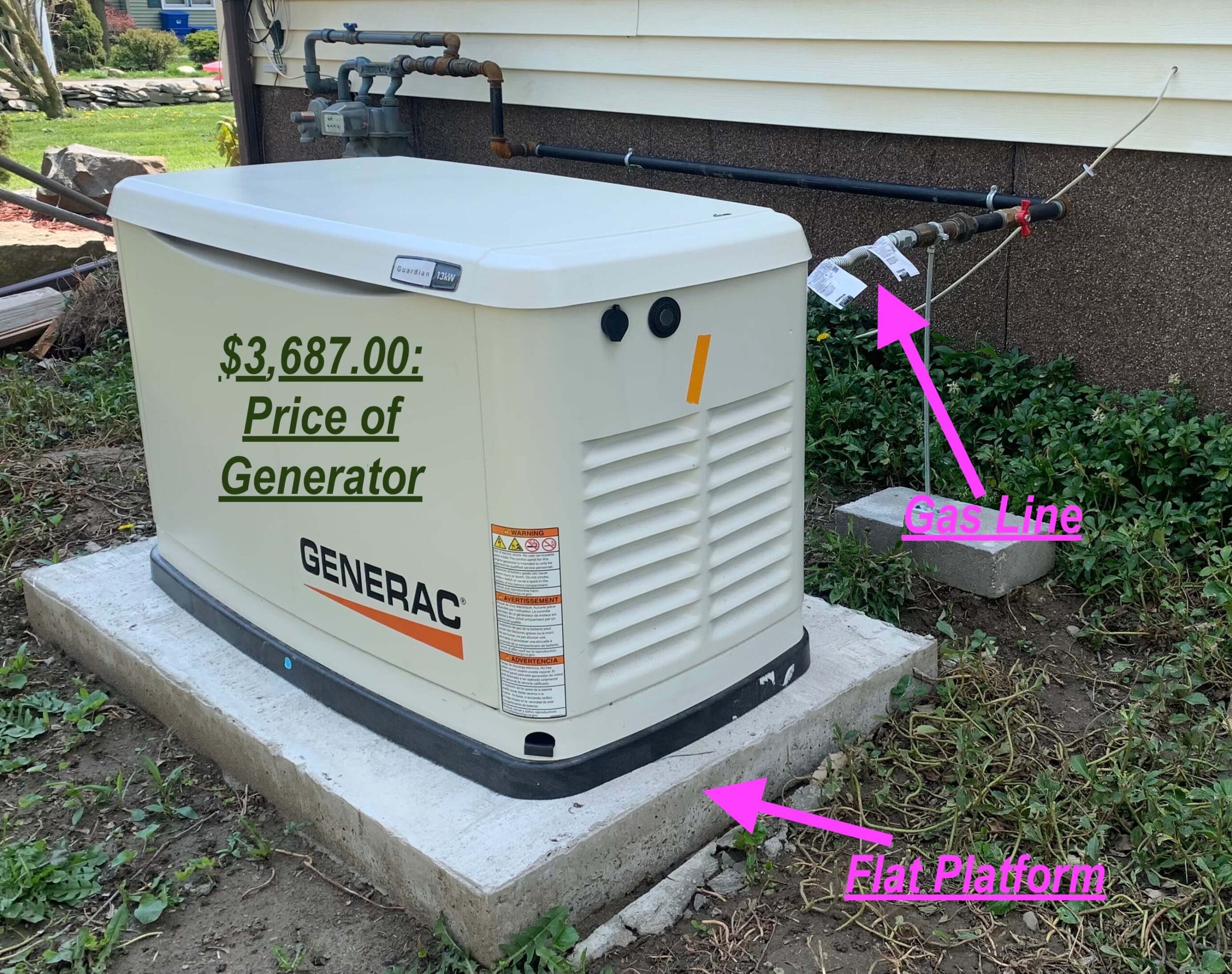Table Of Content

The largest models we test deliver at least 10,000 watts of electricity, enough to power everything in an average home. Smaller models provide at least 5,000 watts, enough to power key household appliances, electronics, and systems in your home. They will, for instance, keep your refrigerator, air conditioner, and well pump running. You can use a home generator to back up essential systems like electricity or appliances or have a generator for one or two key rooms within your home. Choosing to only backup part of your home will typically lower the capacity needed for your generator, meaning it will likely cost less to purchase and run the generator.

Inverter Generators
In other cases, a dedicated circuit may need to be installed before the generator. This may be the case if the home’s electrical panel is not easily accessible from the generator’s location. This generator provides 12.5 kilowatts of power on propane and 11 kilowatts on natural gas. It can be connected to your gas line, so you don’t have to refuel manually. At 63 dBA, this is one of the quietest whole home generators on our list, making it a good option for a small home in an area prone to severe weather. This Briggs & Stratton generator is a good option for someone who lives in an area with frequent power outages.
Solar
Contractors usually quoted on a project-base, but some may choose an hourly quote if they think they’ll need to put in extra work. Also, depending on the size of your house, the capacity needed may go way higher. However, some homes may need generators at 22KW or higher to keep them running. Don't worry about having to be there to start and stop your Generac home backup generator. Having a home generator during a power outage can be convenient or potentially life-saving depending on the situation, but it does carry a significant cost that some might not be willing or able to pay.
Best Home Generators Of April 2024 – Forbes Home - Forbes
Best Home Generators Of April 2024 – Forbes Home.
Posted: Thu, 15 Feb 2024 08:00:00 GMT [source]
Best Standby Generator for Your Budget: Champion 12.5-kW
Generators come with a cost that may make them seem more of a luxury than a necessity. A transfer switch is required when connecting the whole house generator to the main utility line. This switch allows for a smooth transfer from utility power to independent power. Purchase a whole house generator that's sized right for your home's power draw. Build in allowances for planned changes like additions or basement remodels that increase the demand for electricity.

Extreme weather events that take down power lines are often the same events that send flood water into basements or cause groundwater to rise. Diesel and propane are on equal footing, with each type of whole house generator costing around $200 to run. Whole house generator installation is a highly specialized task that must be done by professionals; there is no DIY component. Installation requires attaching the generator to the main power line.
These power stations do not use fuels like propane or gas, but instead charge via your home’s AC power and/or via solar panel. What’s great about portable power stations is they can be used inside your home or apartment since they do not produce any dangerous emissions. Whole house generators are able to do this because they have higher power capacities—22 to 48 kilowatts—than portable generators, and can run significantly longer without maintenance.
Price (20%)
Even non-emergency, health-dependent devices like humidifiers require electricity. The cost to install a concrete pad for a whole house generator is about $375 or around $50 to $75 per square foot. Generator installers and most electricians install whole house generators.
Therefore, installing a whole house generator on a large home could cost you up to an additional $10,000. The other main piece behind whole house generator costs is the cost for installation. When buying from a mainstream manufacturer, you are usually limited to using one of their certified installers. If you go with someone else, you may lose warranty protections, which could be a major expense if anything goes wrong in the future. Portable solar generators cost $500 to $3,300 and are ideal for apartment and condo residents or homeowners seeking an environmentally friendly solution.
Reputable brands offer 5- to 10-year limited warranties on whole house generators. A 1,000- to 3,000-square-foot home can usually get by on a 16,000-watt (16 kW) generator, while a larger home between 3,000 and 5,000 square feet would need a 20,000-watt (20 kW) generator. Sump pumps are an automated way to keep basements and low-lying areas of the home from accumulating water or flooding—at least if they have power.
While relying on a portable means one will need to quickly get outside to fuel and start up the unit, a standby will switch on automatically. Whether homeowners are browsing Home Depot generators or shopping online, there is a wide variety of brands to choose from. Size options, as well as prices, may vary between these brands, so homeowners will want to find the unit that best fits their needs and budget. The starting costs of the best generator brands on the market are as follows.
Standby generator installation costs depend on the size, fuel source, distance from the electrical panel and gas meter, and amount of wiring and gas plumbing to hook up. Homeowners are advised to keep in mind that while natural gas prices are often a bit lower than gasoline, a natural gas generator uses more gas than other types. An electrical subpanel redirects power from a home’s main panel to another part of the property, preventing the main panel from overloading. If a home does not already have a subpanel, or it has one that is older than 25 years, an electrician may recommend adding a new subpanel before installing a generator.
Best Solar Generators of 2024 - CNET
Best Solar Generators of 2024.
Posted: Fri, 22 Mar 2024 07:00:00 GMT [source]
Additionally, neither Briggs & Stratton generator on our list comes with an Automatic Transfer Switch—those must be purchased separately. Installing a whole house generator or its transfer switch is a job best done by an experienced professional to ensure compliance with local safety codes. They’re built with longevity in mind, but running any type of engine constantly will cause wear and tear on batteries, belts, hoses and fluids. The better you maintain your generator, the more reliable it will be.
This guide will walk you through the factors you need to consider before you buy a generator, including types, cost and maintenance. When your power goes out, whether due to a storm or grid failure, time seems to stop. There's the mad scramble to put all perishable food into coolers, find flashlight and lantern battery replacements, and set up your phone hotspot. However, if you install an automatic generator that can power your whole home, those worries will be a thing of the past. If you live in an area prone to heavy storms, power surges, or high winds, investing in a backup generator might be something to think about.
Installation costs and taxes won’t be included and will vary based on a number of factors. GM is working with home EV charging installer Qmerit, which will work with interested customers and provide them a price quote based on location, energy usage, and more. General Motors’ initial new home energy products are now available to purchase, including the equipment necessary to turn your GM-made electric vehicle into a mobile power generator for your home. You should balance the generator cost with your budget to avoid overpaying for features you don't need. If your standby generator isn’t covered by your home warranty, you should ensure it comes with decent coverage for parts and labor in case something goes wrong.
We recommend multiplying the total wattage of your appliances by 1.5 to give yourself a safe margin of error. A small to medium-size house in the U.S. typically uses a minimum of 5,000 to 7,000 watts, so you should expect most generators to have a minimum of 8,500 to 10,000 watt outputs. The Champion aXis is designed to start automatically when your home’s power is lost, evenly manage the electric load and operate at sub-zero temperatures or in extreme heat. While this generator does not have a remote monitoring system, it does come with a 10-year limited warranty, offering more than double every other brand on this list. Another whole house generator alternative is portable generators, which typically go from $300 to $1,200.

No comments:
Post a Comment